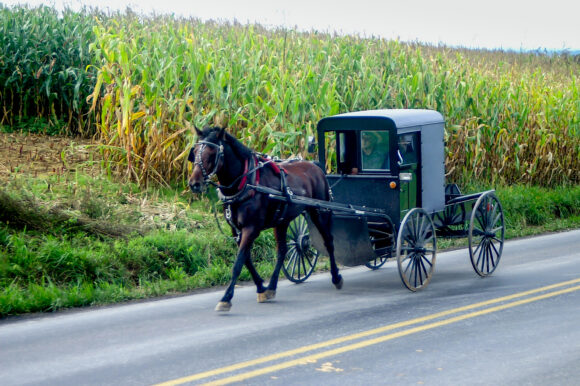Delaware courts have never before been asked whether a horse-drawn buggy is a motor vehicle. Now a state court has definitively ruled that a horse-drawn buggy is not a motor vehicle.
“The plain meaning of ‘motor vehicle’ does not include a vehicle pulled by a horse rather than powered by a motor,” the Superior Court declared in a case brought by Vanessa Harper, who was injured when her motor vehicle collided with an uninsured horse-drawn buggy
Harper sought to have her uninsured motorists (UM) coverage from State Farm cover her injuries, but the insurer rejected her claim. State Farm explained that UM coverage is for collisions with other motor vehicles only. The court agreed with State Farm.
The policy says the UM coverage applies in accidents involving “the ownership, maintenance, or use of an uninsured motor vehicle as a motor vehicle” and defines an “uninsured motor vehicle” as a “land motor vehicle.”
The state’s insurance statute defines an “uninsured vehicle” as one for which “there is no auto liability bond, insurance or other security applicable at the time of the accident in at least the amounts required by the financial responsibility law where the auto is principally garaged or registered.”
Harper argued that Delaware public policy compels a broad interpretation of uninsured/underinsured motorist coverage in her case.
But the court said it can only consider public policy arguments if the statutory language is ambiguous. A statute is ambiguous only if it is “reasonably susceptible” to different interpretations. But the UM statute is “unambiguously” limited to motor vehicles, according to the court.
Harper also asserted that a horse-drawn buggy is an “uninsured vehicle” under the statute definition because it is a vehicle for which there “was no auto liability bond, insurance, or other security applicable at the time of the accident covering the vehicle . . .”
However, the court noted that even if this provision were meant to encompass vehicles without motors, there is no “financial responsibility law” for horse-drawn buggies.
The court concluded that while state law requires that “every person rising an animal or driving any animal-drawn vehicle upon a roadway” must follow the traffic laws applicable to drivers of other vehicles, there is no indication that they must have the liability insurance required of owners of motor vehicles.
To the extent this coverage gap leaves motorists like Harper unable to recover damages, the solution lies with the General Assembly and not with the courts, the court added.
The top photo is for illustrative purposes only.
Was this article valuable?
Here are more articles you may enjoy.


 Musk’s X Probed by UK Over Grok’s Thousands of Sexualized Images
Musk’s X Probed by UK Over Grok’s Thousands of Sexualized Images  Surging Oil Tanker Insurance Points to Growing Black Sea Chaos
Surging Oil Tanker Insurance Points to Growing Black Sea Chaos  Tesla, EEOC Plan Talks to Settle Factory Racism Suit
Tesla, EEOC Plan Talks to Settle Factory Racism Suit  First Brands Judge Approves Examiner to Probe Fraud Allegations
First Brands Judge Approves Examiner to Probe Fraud Allegations 